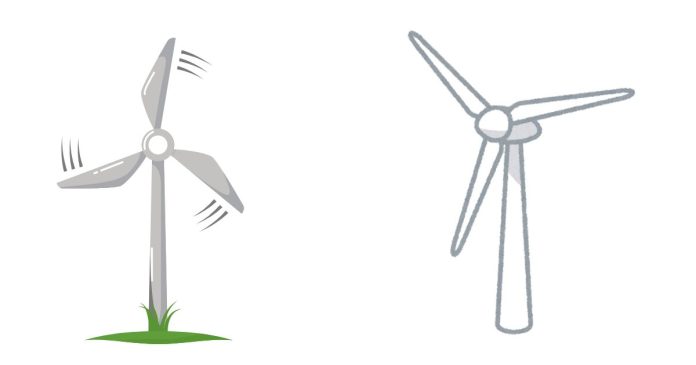What Is a Wind Vane Used For?
If you’ve ever seen a weathervane atop a barn, house, or church, you’ve probably wondered what exactly it’s there for. Often decorated with whimsical designs—like roosters, horses, or arrows—these iconic structures have an important purpose that goes beyond decoration. The object you’re looking at is actually a wind vane (or weather vane), and it serves a practical role in understanding the direction of the wind.
What Is a Wind Vane?
A wind vane is a device that shows the direction from which the wind is blowing. It’s typically mounted on top of a building or structure and rotates freely to point into the wind. The vane itself often consists of an arrow or a figure (like a rooster), which pivots around a fixed point to indicate the direction of the wind.
Wind vanes have been used for thousands of years, dating back to ancient civilizations like the Greeks and Romans, and they have evolved in both function and design. Today, while they may be seen as decorative, their primary function remains the same: to give an accurate reading of wind direction.
How Does a Wind Vane Work?
A basic wind vane works on a very simple principle. It has two main components:
- The Arrow or Figure: The arrow (or sometimes a rooster, fish, or other design) is the part that faces the wind. As the wind blows, it pushes against this component, causing it to rotate.
- The Pivot: The arrow or figure is mounted on a shaft that allows it to rotate freely. This shaft is usually mounted on a horizontal axis to ensure smooth movement.
The direction the arrow points indicates the direction the wind is coming from. So, if the arrow is pointing towards the north, the wind is blowing from the north, and vice versa.
What Is a Wind Vane Used For?
Wind vanes have several practical uses:
1. Weather Prediction
One of the main uses of a wind vane is to help forecast the weather. By observing the direction of the wind, you can sometimes predict changes in weather patterns. For instance:
- A change in wind direction can signal an approaching storm, especially when winds shift from a steady direction (like east) to a different direction (like west).
- Wind from the sea (e.g., from the east in the northern hemisphere) might indicate rainy or humid weather, while winds from the land (e.g., from the west) can signal drier, clearer conditions.
While wind direction alone isn’t a precise science, it can offer clues about what kind of weather is on the horizon.
2. Navigational Aid
Before modern technology like GPS and weather satellites, sailors, pilots, and travelers relied heavily on wind direction for navigation. A wind vane would help mariners understand prevailing wind patterns, allowing them to plan routes more effectively, especially for long voyages. In many places, the direction of the prevailing winds also played a key role in determining trade routes and the timing of sailing expeditions.
3. Agricultural Use
Farmers and agricultural workers often use wind vanes to understand the wind direction, which can impact various aspects of farming:
- Crop management: Wind direction can affect the distribution of pollen for pollination or the spread of airborne pests and diseases. Farmers can monitor wind patterns to plan spraying schedules for pesticides or fertilizers.
- Animal husbandry: In some regions, wind direction can also affect the health of livestock, so farmers may use a wind vane to determine the best placement of barns, stables, or pens.
4. Science and Meteorology
Meteorologists and weather stations often rely on wind vanes, along with other instruments like anemometers, to collect data about wind conditions. Wind direction is an important part of weather systems, and understanding it is key to predicting weather patterns, storm systems, and even climate change over time.
Wind Vane vs. Anemometer: What’s the Difference?
While both instruments are used to study wind, a wind vane is specifically used to measure wind direction, while an anemometer measures wind speed. These two devices are often used together at weather stations to provide a comprehensive picture of the wind’s behavior.
Decorative vs. Functional Wind Vanes
Though many modern wind vanes are more decorative than functional, the basic concept of indicating wind direction remains unchanged. You’ll still find wind vanes on top of houses, barns, churches, and even in gardens or backyards. These decorative pieces often feature intricate designs, ranging from weathered copper roosters to sleek, minimalist arrows.
In addition to serving their original function, these stylish wind vanes have become a beloved part of architectural design. Their charm comes from the combination of utility and aesthetic appeal, making them as much a piece of art as a weather instrument.
In Conclusion
A wind vane is a simple yet effective tool for determining the direction of the wind. Whether you’re predicting the weather, navigating a journey, managing crops, or simply admiring a beautiful design atop a roof, the wind vane serves a timeless purpose. Though often associated with rustic country charm, it continues to be an important part of our understanding of weather and wind patterns today. So, next time you spot a weather vane, you’ll know it’s not just a charming feature—it’s working to point the way the wind blows!
Related posts:
- What does ringing in the ears mean spiritually?
- What Colors Do Blue and Green Make?
- How Long Does Raw Chicken Really Last in the Fridge?
- What are some amazing and memorable Valentine’s Day ideas that will leave a lasting impression?
- What is the definition of ‘friends with benefits?
- What is the difference between a bachelor’s and a degree?


